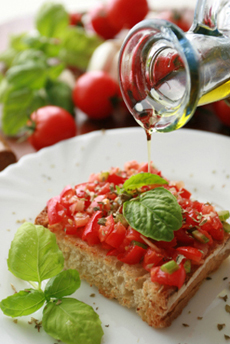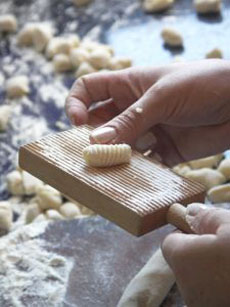FOOD FUN: The Most Mispronounced Foods
 It’s broo-SKET-tuh, not broo-SHET-tuh. Photo by Vitalina Rybakova | IST. |
When we were young, there was a long-running ad for a self-improvement course that promised to make upwardly-aspirational Americans more cultured. One of the ads had this headline: “I’ll have a cup of expresso, please. And make it black.”
There is no “expresso,” of course; and it it always black. Take the course, and you’ll never be embarrassed by such errors. While this ad began running in the early 20th century, the same mistakes are made today. Eat24.com, an online delivery and takeout service that delivers restaurant food in 950 cities nationwide, pulled together a list of most frequently mispronounced foods; and we’ve added a few. Have fun with it, and feel free to submit your own list. Beignet: Pronounced ben-YAY, the best of these French-style doughnuts we’ve ever had were at Café du Monde in New Orleans (worth a trip!). Here’s more information and a photo of beignets. |
|
|
Bruschetta: Pronounced broo-SKET-uh, this grilled bread with choice of toppings is a popular Italian appetizer and snack. Here’s a recipe and the difference between bruschetta and crostini. Chipotle: Pronounced chee-POHT-lay, these are dried, smoked jalapeño chiles. For some reason, it’s also misspelled by more than a few of the small producers who send us products. They insist on spelling it (and no doubt, pronouncing it) “chipolte.” These pineapple chipotle ice pops are truly delicious. More about chipotle. |
||
|
Crudités: Pronounced croo-dee-TAY (or in English, croo-dee-TAYS—the French don’t pronounce the “s” on the end), this is the French term for raw vegetables served in bite-size pieces with a dip. It’s one of our favorite low-calorie party foods and snacks. Serve it with this tzatziki recipe, made with nonfat Greek yogurt. Espresso: Pronounced: es-PRESS-oh. There is no “x.” See the different types of espresso drinks. Gnocchi: Pronounced NYAWK-kee. The most famous potato pasta, these small dumplings can be served plain or flavored. Here are tips for making gnocchi, a gnocchi recipe and a sweet potato gnocchi recipe. Gyro: Pronounced YEE-row or ZHEER-oh. If you must, say “hero,” but never JI-row or GY-row. Here’s how the hero sandwich got its name. Habanero: In Spanish, the pronunciation is ah-va-NEH-ro, but Americans can say hah-bah-NEH-row. That’s an “n,” not an “ñ,” in the center of the word. Here’s more about habanero chiles, the hottest in Latin America. |
 Gnocchi, pronounced NYAW-kee. Photo by Neco Garnicia | SXC. . |
|
|
Pho: Pronounced FUH. This complex and luscious Vietnamese soup deserves to be pronounced correctly. Here’s a pho recipe. Quinoa: Pronounced KEEN-wah. One of the most nutritious foods on earth, “quinoa” means “mother grain” in the Inca language, Quechua. Serve it as a side instead of rice or potatoes, and try this quinoa tabouli recipe. Sriracha: Pronounced shree-RAH-cha, lovers of hot sauce should pick up a bottle. Made from hot red chiles, vinegar, garlic, sugar and salt, the sauce is named after the coastal city of Si Racha on the Sea of Thailand, where it was first produced and served at seafood restaurants. Try it in this Red Curry Shrimp recipe. Quesadilla: Pronounced kay-suh-DEE-yuh. Originating in Mexicao, a quesadilla is a flour or corn tortilla filled with a savory mixture containing cheese (queso) and other ingredients, then folded in half to form a half-moon shape. Here’s a ribeye quesadilla recipe from Bobby Flay. Or, try this American fusion peanut butter snack quesadilla. Worcestershire Sauce: Pronounce WUS-teh-SHEER. It is believed that a Captain Henry Lewis Edwardes (1788–1866) brought the recipe for the sauce home after travels in India. It is not known how the recipe got to Lea and Perrins, but John Wheeley Lea and William Henry Perrins, two dispensing chemists (pharmacists) in Worcester (pronounced WOO-ster), England, created a recipe that was first sold commercially in 1837. “The Original Lea & Perrins Worcestershire Sauce” is now owned by H.J. Heinz Company. DO YOU HAVE OTHER NOMINATIONS? Use the Contact Us link to send them in!
|
||


